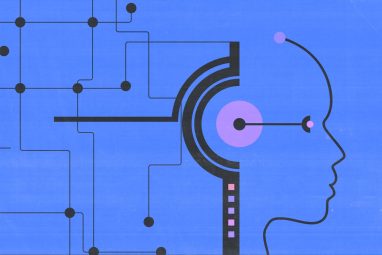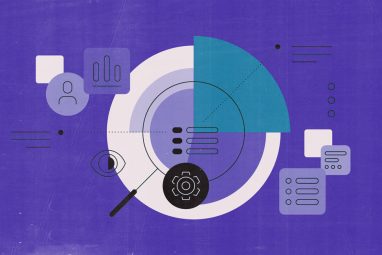The Agentic AI Shift: Rethinking the Role of Intelligence in Organizations
Agentic systems may assist, prompt, and even surprise us, but they are not ready to be left entirely alone.
Topics
MIT SMR CONNECTIONS
News
- UAE President Meets Musk to Discuss AI and Cross-Border Collaboration
- UAE Forms National Media Authority to Centralize Media Oversight
- TikTok Strikes US Sale Deal With Oracle, Silver Lake, and UAE’s MGX
- Gartner Pinpoints the Companies Leading the AI Vendor Race
- UAE to Add 1M+ Jobs By 2030, Driven by Tech Sector
- Not All AI Firms Will Pull Through, Says Bill Gates

[Image source: Krishna Prasad/MITSMR Middle East]
If artificial intelligence (AI) were a colleague, it would be…
A friend, a coach, a rebel, or even a rival?
Today, AI is fundamentally reshaping decision-making, team dynamics, and the leadership architecture in modern organizations. At The Agentic AI Shift: Strategic Imperatives for Digital Leaders—a thought-leadership session hosted by MIT SMR Connections in partnership with Tredence—the conversation extended beyond capabilities to character. For many in the room, the real question wasn’t just what AI can do, but who AI is becoming within organizations.
This marks a shift from traditional, rule-bound AI to a new era of autonomous, agentic intelligence. Unlike conventional systems that rely on pre-programmed logic or supervised inputs, agentic AI can make decisions, take initiative, and adapt independently to context, almost like a teammate with its own judgment.
In the article Five Trends in AI and Data Science for 2025, Thomas H. Davenport and Randy Bean describe this moment as one of both promise and hype, with leaders navigating how to harness agentic AI while mitigating its limitations.
They note that the earliest agentic AI tools won’t be trusted with high-stakes decisions or customer-facing transactions. Instead, they’ll handle small, structured internal tasks,like changing passwords in IT systems or booking vacation days in HR platforms. While some generative AI (GenAI) bots can already complete content creation tasks, it often takes multiple agents working together to accomplish even moderately complex goals, such as making a travel reservation or executing a banking transaction.
However, the technology is still built on probabilistic models—predicting the next word or action—which means it remains prone to errors and inaccuracies. As Davenport and Bean note, “there will still be a need for humans to check in on them every now and then.”
Autonomy Without Oversight: When Things Go Wrong
The reasons have become evident in various instances. Take, for instance, a real-world example from the pandemic when a news curation agency replaced human editors with AI systems on its platform. The goal was to be fully autonomous. AI now curates, summarizes, and personalizes news. And it worked. The AI processed vast volumes of content at lightning speed, generating localized feeds for millions of users, and the refresh rates were much higher.
But soon enough cracks started to appear. Stories were miscategorized. Sensitive headlines were published without the nuance they required. The AI lacked contextual understanding, the human ability to balance speed with judgment. The agency had to introduce human oversight into the editorial process, especially during major world events.
The book Agentic Artificial Intelligence: Harassing AI Agents to Reinvent Business, Work, and Life by Pascal Bornet et al. offers multiple real-world examples that highlight the promise and pitfalls of agentic AI. One such instance involves a seemingly simple task—using an AI agent to plan a family vacation itinerary. What began as a hands-off experience quickly devolved into a frustrating spiral, with the human opening multiple browser tabs to verify details, only to discover that several of the AI’s suggestions were outdated or the venues were no longer operational. In another case, a keynote speaker preparing for a talk on climate change impact on global food security was forced to withdraw after realizing that many of the references compiled by junior staff, assisted by AI, could not be verified or traced to legitimate sources. Most concerning was the account of a patient whose health turned critical because the machines monitoring individual symptoms failed to communicate with each other, preventing a timely, coordinated response.
These real-world experiences show how autonomy without accountability is a fragile proposition. This sentiment resonated strongly in the room, and delegates returned to it repeatedly throughout the discussion. Who is accountable when AI makes decisions?
Laying the Groundwork: Middle East Organizations Are Already Moving
Despite the skepticism, there is no denying the momentum.
While agentic AI may still be in its early stages, predictive and analytical models are already embedded in the operational fabric of most organizations. Companies across the Middle East are making significant investments in this direction, laying the groundwork for more autonomous, decision-capable systems. From smart dispatch to self-optimizing infrastructure, these efforts signal a technological shift and a strategic rethinking of how decisions are made and scaled:
| Company | How They’re Investing / Relevance to Agentic AI |
| Careem | Actively advancing applied AI: autonomous dispatch, smart ride assignment, and smart dynamic pricing represent early forms of agentic behavior. Investment is likely accelerating as part of their super app vision. |
| Etisalat (e&) | Transforming into a “techco” with major investments in smart networks, AI-led customer management, autonomous networking to fraud, and self-optimizing telecom systems—foundational elements of agentic AI. |
| DP World | Building intelligent logistics through smart ports, autonomous vehicles, and AI-based supply chain decisioning—agentic AI is central to its future operational model. |
| Emirates NBD | Through its AI lab, the bank is exploring automated risk assessments and self-service bots. These are steps toward agentic finance, though full autonomy is still on the horizon. |
| Al-Futtaim | Introduced Blue AI, a proprietary platform designed to drive real-time personalization across retail experiences. While still semi-agentic, it reflects a growing focus on adaptive, autonomous marketing and decision systems. |
From Friend to Rebel—Why AI Still Needs Us
Throughout the session, leaders described AI in deeply human terms: a coach who sharpens thinking, a friend who lightens the load, and, in some cases, a rebel who is capable, creative, and occasionally prone to veering off course. These metaphors reflect the optimism and the ambiguity surrounding agentic AI. And the challenge is no longer about capability, it’s also about character and control.
As Davenport and Bean note in their article, we are still early in the journey. Agentic systems may assist, prompt, and even surprise us, but they are not ready to be left entirely alone. To move from assistants to trusted teammates, organizations will need to design AI systems that are not only intelligent but also accountable. That means building oversight, clarifying responsibility, and preparing teams to collaborate with AI systems that think and act independently, without replacing human judgment in moments that matter.








